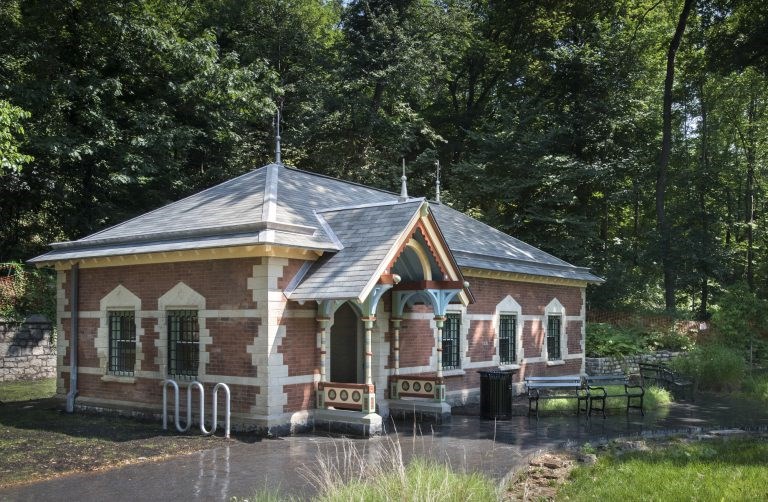
Prospect Park's Wellhouse underwent a $2.34 million transformation into a comfort station and is now home to the first composting toilets in a New York City park. The Wellhouse, the last remaining building in Prospect Park by park designers Olmsted and Vaux, dates back to 1869.
"This is the first time we've had power in the building—it's pretty exciting," said Alden Maddry, senior architect with the Prospect Park Alliance in a statement.
The Wellhouse's original purpose, located by the lake at the base of Lookout Hill, was to pump water to feed the park's waterways—its pools, waterfalls and the Prospect Park lake. At the time of its creation, the structure was considered a great technological achievement. However, when the park was connected to the city's water supply in the early 20th century, the Wellhouse became obsolete.
Now, after decades of disuse, the building has being given new life and new purpose.
"The project will save about 250,000 gallons of water a year from going into the city's sewer system," noted Maddry.
Composting toilets only use 3 to 6 ounces of water per flush, 97% less water than a conventional toilet. Additionally, the project features a greywater garden, which uses water collected from hand sinks, janitor sinks and floor drains to irrigate the landscape.
The Wellhouse renovation project, funded by the City Council, also included the restoration of the building's historic structure, installation of a new roof, repair of brickwork, recreation of a portico and decorative finials on the roof.
"The Wellhouse will perform a vitally needed function, and is vitally important from an historic perspective," said Zimmerman.
In a few months, thousands of worms will be installed in the composting tanks, starting their work to produce live-enriching compost.



